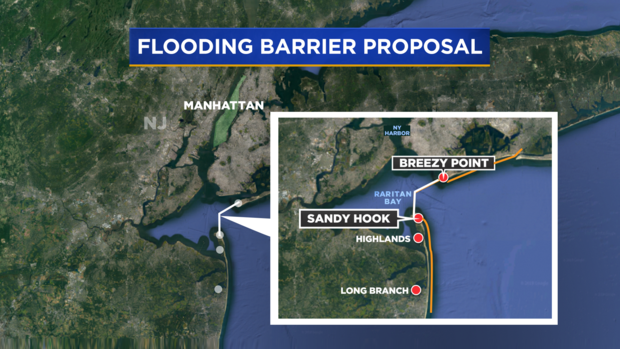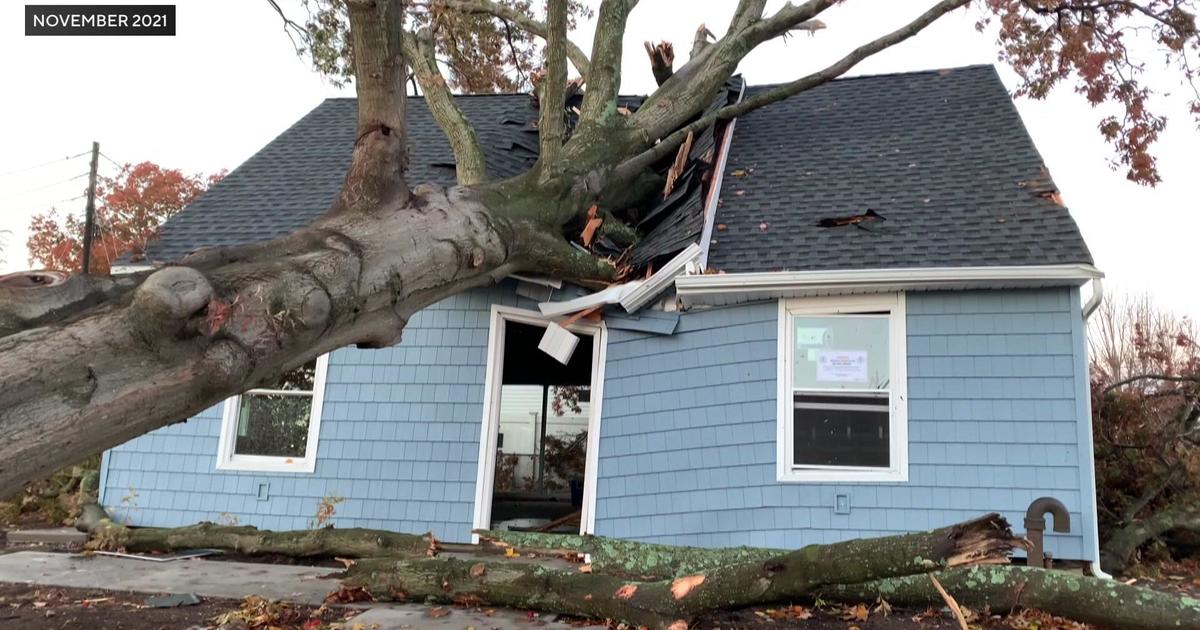Officials, Advocates Spar Over Proposed Flood Barriers To Protect Against Future Storm Surges
NEW YORK (CBSNewYork) -- Superstorm Sandy devastated coastal communities in the Tri-State area nearly six years ago and since then, building a more resilient coastline has become a priority for residents and lawmakers.
To keep a similar storm from wrecking similar havoc, the U.S. Army Corps of Engineers is considering five options.
"Our primary mission is, and I think the bigger factor that goes in to weigh in is the benefit and the cost comparison of each of the plans," Cliff Jones, Chief of the Corps' Planning Division, said.
At a quick glance, options include multiple surge barriers, flood walls, levees, and seawalls throughout New York Harbor, along Atlantic beaches, and up the Hudson River.
One of the options is getting the lions' share of attention. It involves a five-mile storm surge barrier that would span from Sandy Hook to the Rockaways, similar to the Netherlands' Delta Works.
"Five miles across here, it's just unimaginable," said Ida Sanoff, Executive Director of the Natural Resources Protective Association. "When you put a structure in the water here it frequently gives you unexpected impacts."
She says the proposal could be a "sneak attack," and wants to make sure her voice is heard.
"No one on the Brooklyn shoreline knew these meetings were going to be held," she said, referring to meetings held by the Army Corps this week to inform the public of options.
She's not the only one feeling blindsided. State Senator Terrence P. Murphy (R-40th) says he feels left out of the conversation, too.
"We're asking the Army Corp to have a seat at the table," he said. "Have a meeting in Sleepy Hollow."
Baykeeper Greg Remaud tells CBS2 he got wind of the meetings and says the perimeter is the only solution that offers protection from storm surges in a fiscally responsible and ecologically sound way. The key, he says, is avoiding large-scale engineering.
"They often cause more problems than they solve in terms of back flooding, cutting off tidal flooding over time," Remaud said. "Tidal flow provides oxygen to the estuary, it's what brings in nutrients and cleans our contaminants."
The Army Corps hopes to identify a tentative plan by the year, but says a final plan wouldn't be sent to Congress until 2022. After that it could still be years before work on the ground begins.




